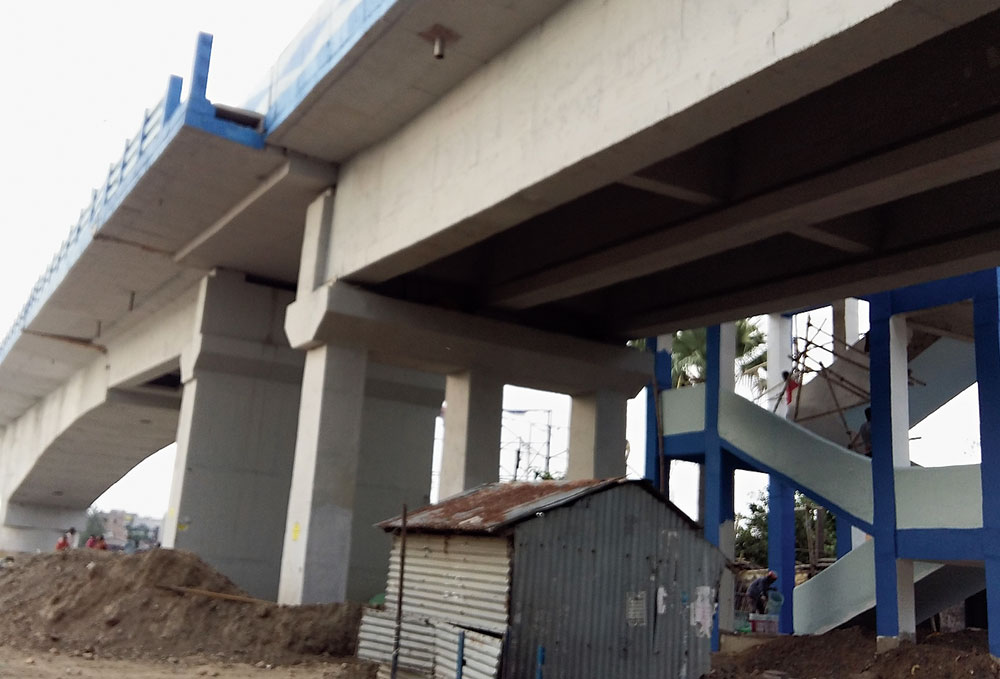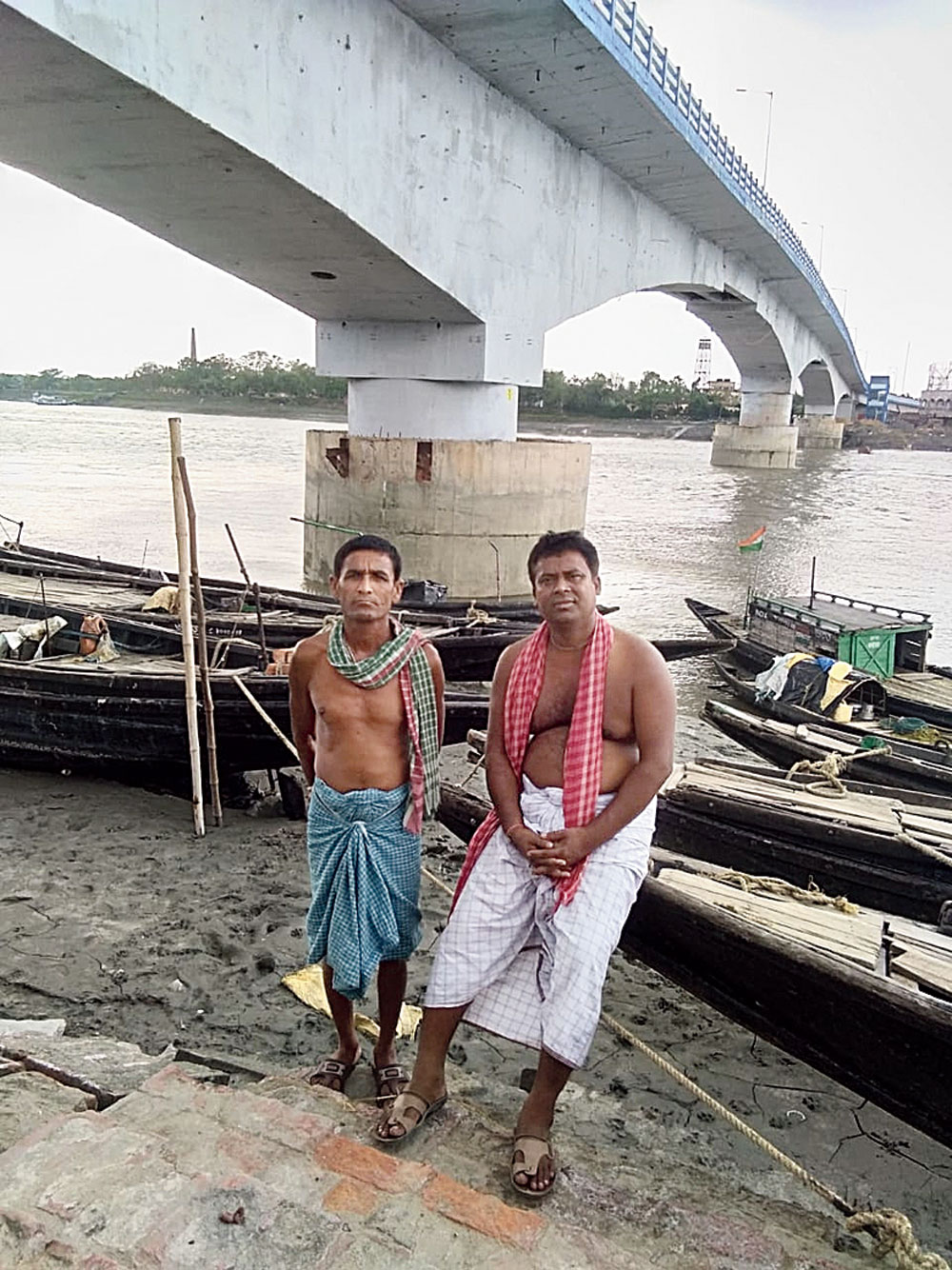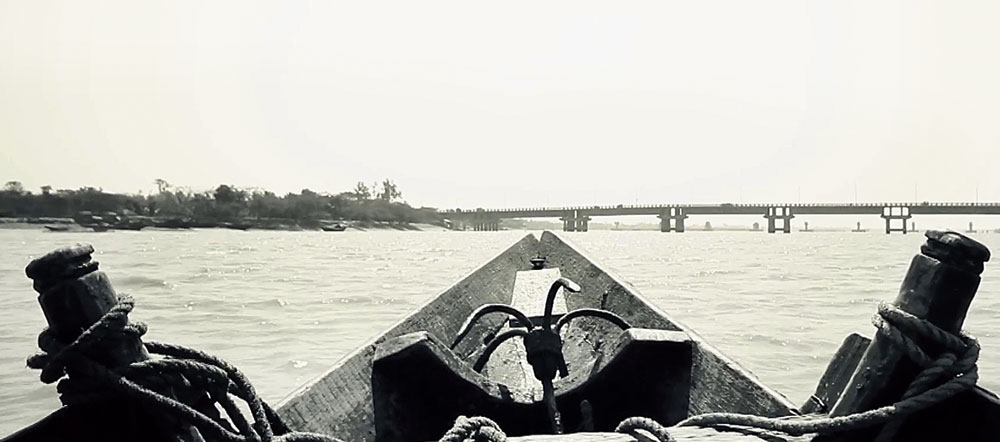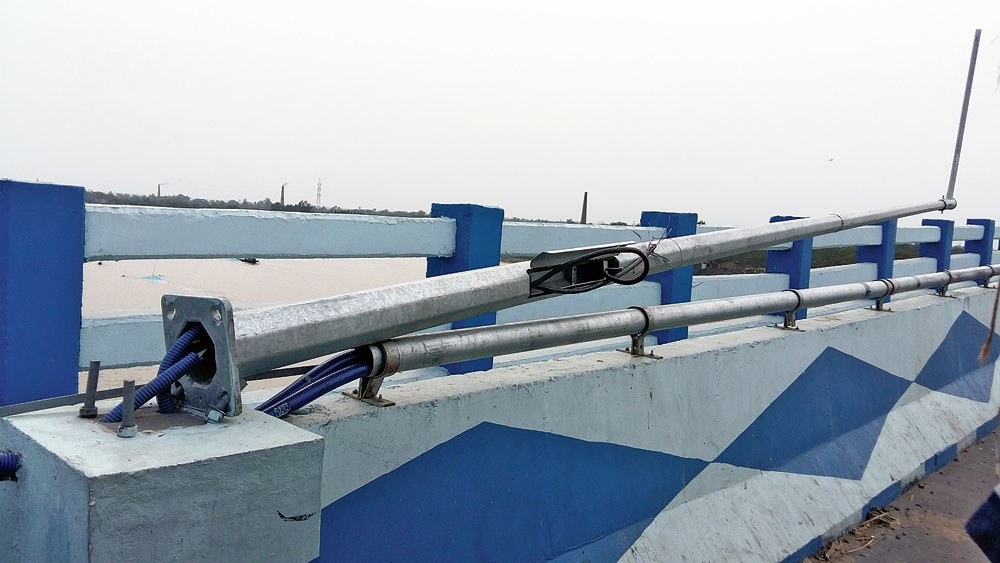This bridge connects disaster with disaster. On February 28 this year, Bonobibi Setu across the river Katakhali was inaugurated in Hasnabad in North 24 Parganas district in Bengal. The bridge, delivered just before the elections, is being touted by the Trinamul government as a triumph of “development” in the area, as it connects Hasnabad, the gateway to Calcutta, around 80km away, with the large area, including Hingalganj, that lies beyond, towards the Sunderbans.
Others see it as a perfect example of what can go wrong with a bridge. Bonobibi Setu is also an example of what the Left Front regime had in common with the Trinamul one: a model of development that does not take into account either the environmental or human cost.
But most of all, perhaps, the bridge is emblematic of the changing colours of politics in Bengal.
The foundation of the bridge, a state public works (road) (PWR) department undertaking, was laid way back in 2006, when the Left was in power in the state. Two pillars were built at first on the riverbed, but by 2009 they had to be dismantled because they were weak, or “disturbed”, according to a PWR official. Work remained stalled till 2015, but then picked up speed at the behest of current Bengal chief minister Mamata Banerjee of the Trinamul, who is very keen on bridges, especially in Sunderbans.
Inaugurating the blue and white structure, 1,050 metres long and 8.5 metres wide, state food and supplies minister Jyotipriyo Mullick said in February that the Rs 90-crore bridge would connect “Sunderbans with Basirhat, Sunderbans with Barasat, Sunderbans with Barrackpore and Sunderbans with Calcutta”. He promised another bridge nearby with far-reaching consequences, from Nazat to Kalinagar. He then promised the Sunderbans a bouquet of small bridges.
“The idea is to connect the last village in Sunderbans,” he said.
The Bengal government envisages Sunderbans as a bridge country and Bonobibi Setu is an important achievement in that direction, in the face of an increasing feeling that bridges — and the development they symbolise and are bringing in — are destroying Sunderbans’s environment.


(Top) Abandoned boats and (above) stairs that will never be built to access the footbridge.
Many people are happy. “The bridge has been a great help,” says a young man with a small grocery store at the Hingalganj end of the bridge. Before he would have to pay more to get his supplies that were brought on boats across the Katakhali, a tributary of the river Ichhamati that flows through the area. But now a bus ride does it, which costs less, is much faster and more convenient.
“About 1.80 lakh to 2 lakh people use the bridge every day,” says Sanjay Das, work assistant at PWR, Basirhat, who was part of the Bonobibi Setu supervising team.
Access to Hasnabad and therefore Calcutta also means greater access to work, education and health care, which is a great boon for the area.
Then why are so many others complaining?
If the advantages are kept aside, the bridge is a case study of how not to build a bridge, local residents say.
Those concerned with the environment are unhappy. “If transport has to be developed in Sunderbans, why can’t it can be done through waterways,” asks Sumana Chowdhury, who publishes a fortnightly newspaper called Tapoban from Hasnabad.
“We have to remember that Sunderbans was not meant for human inhabitation in the first place. A connection with the city cannot be established at the cost of the equilibrium of the place,” she adds. “Besides, via a bridge, so much else comes into Sunderbans from the city. A crime like trafficking becomes much easier too.”
But the bridge itself is like a glaring error of construction. Its alignment is not straight. This makes many apprehensive about its safety.
“Yes, it is like a snake,” agrees Das. “That is because the bridge was built bypassing a few private plots. But it is safe,” he insists.
There is no easy explanation for the width of the bridge that hardly allows two vehicles to pass each other comfortably. It was narrow to begin with, but after three changes of plan, two footbridges with railings were added to two sides of the bridge. The railings were added to prevent accidents after a Murshidabad bus mishap killed 38 people in January 2018.
The footbridges have made the bridge even narrower. The footbridges themselves are so narrow that people can hardly walk on them. Pedestrians are using the main bridge meant for vehicles. Plus, carts selling fruits and snacks are parked on the bridge.
Quite stunningly, one of the footbridges, after eating up so much space, turns out to be merely a decorative piece. No staircase leads to it from the ground level; and one side has already been sealed. This footbridge hangs in the air on the side of the bridge. It may remain that way, says a government official.
Residents also complain that the inclines on both ends are too steep, making it difficult and unsafe for vehicles to get on to the bridge. “The bridge stands tall at 45 metres at its highest point to let boats and steamers pass,” says Das. “That is why the slopes are steep at both ends,” he explains.
An electrician working on the bridge complains that his work is never going to end: every day something gets stolen. After one-and-a-half months, out 234 GI pipes installed, only 170 remain; 300 metres of wire are also gone.

Former boatmen Dinabandhu Biswas and Aseem Mandal.

A still from Setu, a film by Krishnendu Dutta that raises similar concerns about the fate of boatmen after a bridge was built on the river Matla in Canning, Sunderbans

Nuts and bolts stolen from poles and lamp posts on the bridge. Pictures by Chandrima S. Bhattacharya
Below the bridge, another story unfolds. Hasnabad had a busy ferry ghat before the bridge. The boatmen who worked here have all lost their jobs.
They are an angry group. Gathered around their union office, Hasnabad Ferryghat Dingi Chalak Union, INTTUC, which is affiliated to the Trinamul, they speak of having been completely overlooked.
About 120 boatmen worked daily at the ferry ghat. Many of them are old and unable to find other work. Others find themselves unsuitable for new work. As they speak, their families, mainly their wives, join the conversation.
“All of us are living in misery,” says Aseem Mandal, a former boatman. “With our families we are about 500 people.”
The younger men are looking to migrate now, to Calcutta or places outside Bengal. The women are turning to working in other households as maids. It is a loss of livelihood and dignity.
Jaba Mandal, 25, whose husband was a boatman, works as a maid now. “I earn Rs 1,000,” she says. She is the only earning member in her family.
Sadhan Mandal, 60, has sold his boat worth Rs 2 lakh for Rs 50,000. Many are selling their boats for such a low price.
“We are tired of local Trinamul leaders promising us help or compensation. Nothing has happened so far,” says Sadhan Mandal.
In the absence of support from the ruling Trinamul — 500 people do not make a large vote bank — the BJP has stepped in. Local BJP member Rabin Pal is guiding the boatmen to articulate their concerns.











